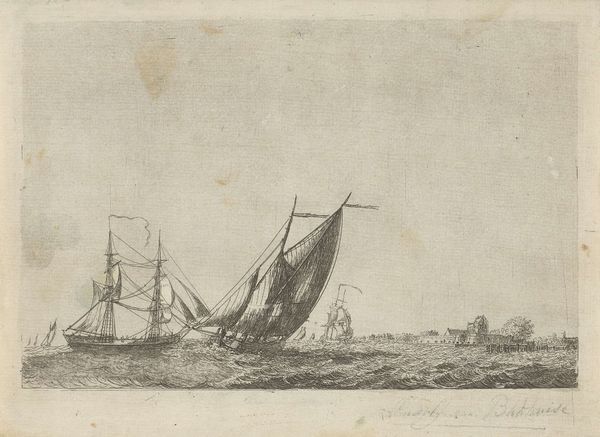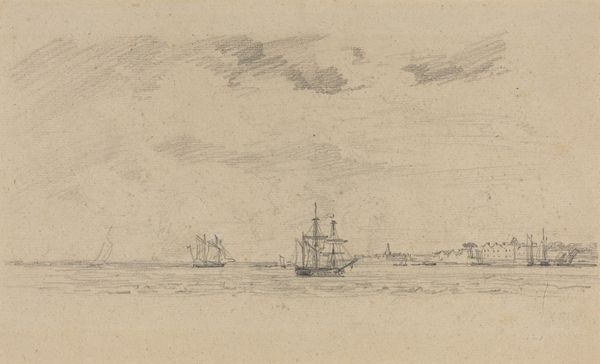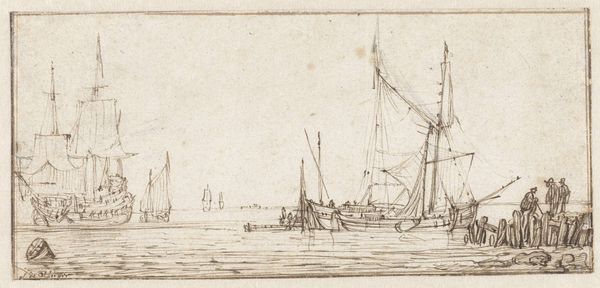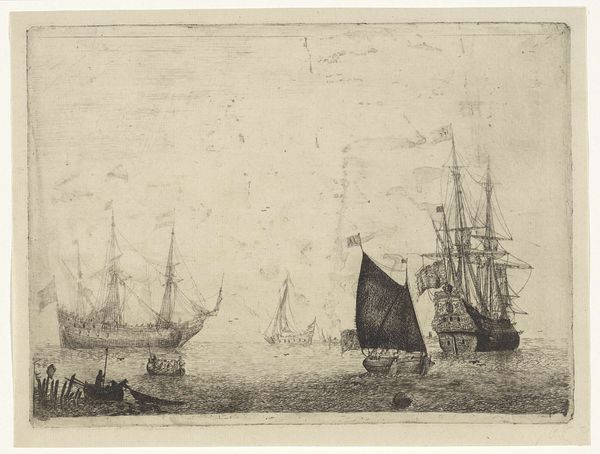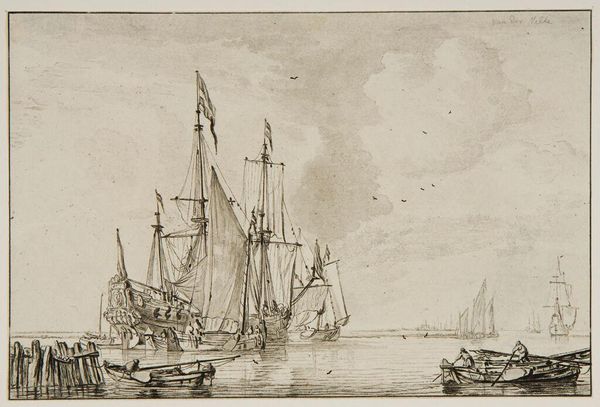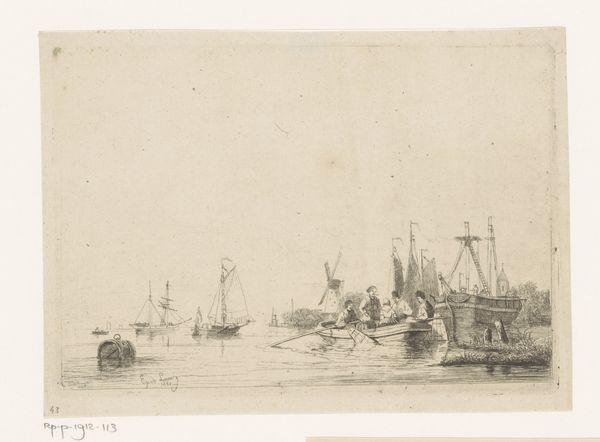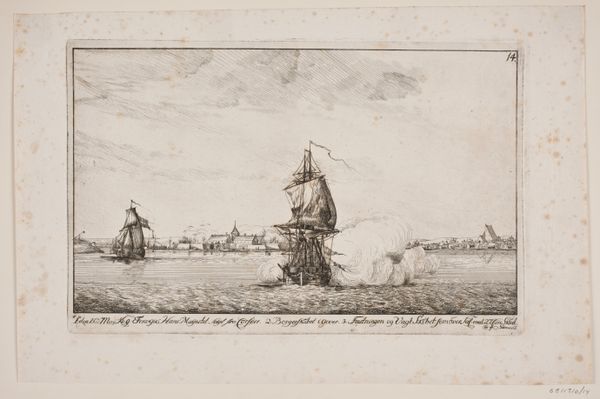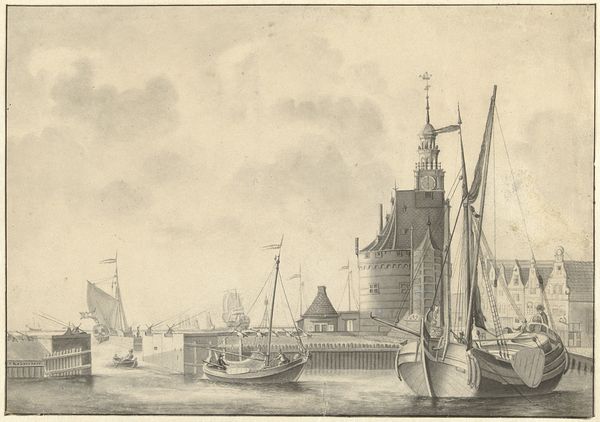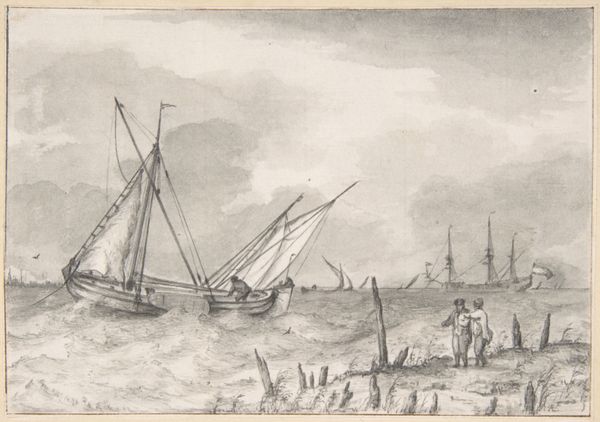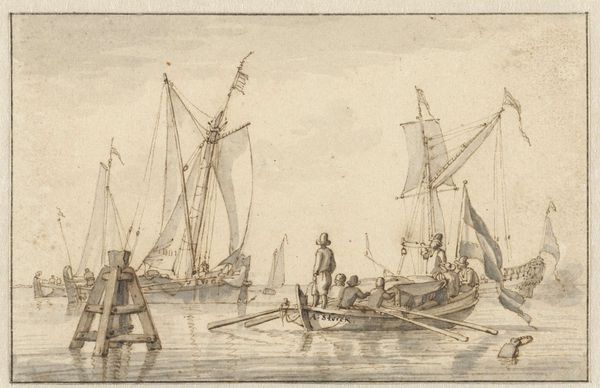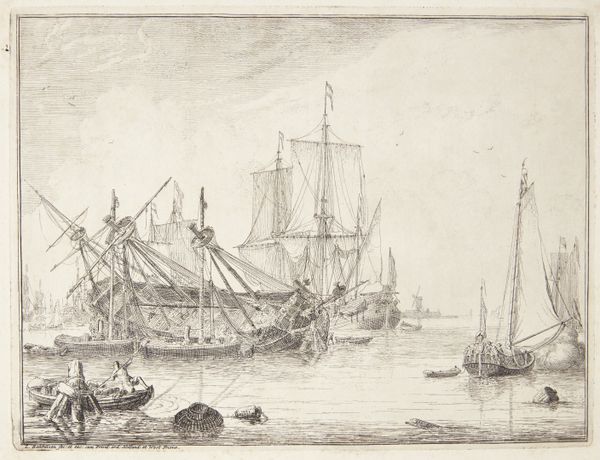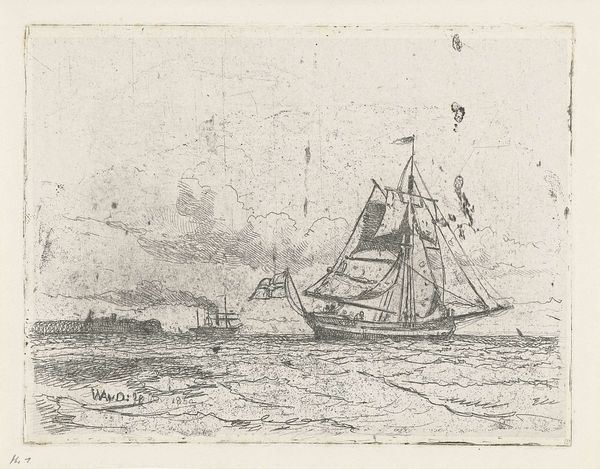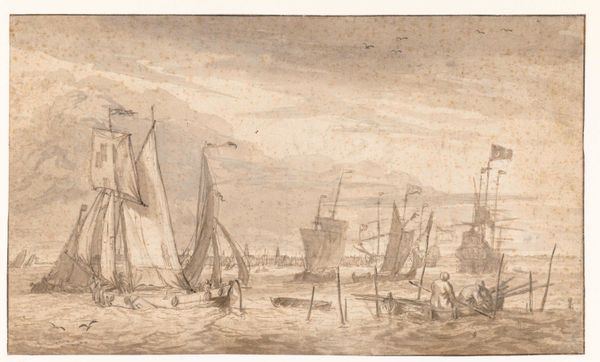
drawing, print, etching
#
drawing
#
boat
#
baroque
# print
#
etching
#
landscape
#
river
#
cityscape
Dimensions: Sheet: 1 3/4 × 6 7/16 in. (4.5 × 16.3 cm)
Copyright: Public Domain
Editor: So, this is Wenceslaus Hollar's "Lillo," an etching from between 1642 and 1644. It's incredibly detailed for its size; you can almost feel the salt air. What strikes me is the sheer amount of labor involved in producing such a detailed print. What stands out to you? Curator: I see a fascinating document of material culture and the division of labor in 17th-century maritime society. Look at the boats, the way they're rendered; consider the resources – wood, sailcloth, rope – needed for their construction, and the labour that goes into acquiring and crafting those resources. What social relations do those ships imply? Editor: That's a really interesting point. It makes me think about trade, maybe even the movement of goods that enriched certain classes at the expense of others. But what about the printmaking itself? How does that fit into your reading? Curator: The print, itself, becomes part of that circuit. Consider the materials – the copperplate, the ink, the paper, and the tools used for etching. Then there’s the specialized labor of Hollar and the infrastructure of print selling; these are all things produced through specific relations of production. Who was consuming these images, and what role did these images play in constructing their understanding of the world? Editor: I never thought of it that way, it is quite humbling to realize just how many factors shaped the materials that artists have been using through the ages. It's easy to just appreciate a drawing for its artistry without realizing how it's embedded in social systems. Curator: Precisely. By analyzing the materials and production processes, we start to challenge this supposed split between "art" and "craft," or between aesthetic appreciation and social analysis. How do you think we might apply this lens to other artworks we encounter today? Editor: I think it would encourage me to always consider context. Next time, I want to research into not just the artist but the world that built the art!
Comments
No comments
Be the first to comment and join the conversation on the ultimate creative platform.
